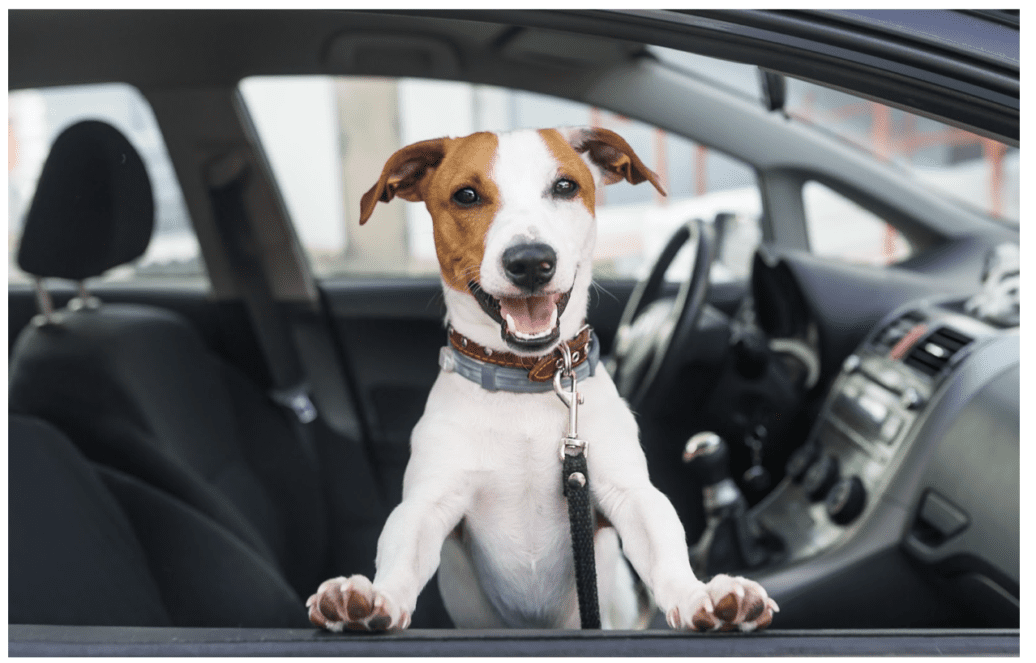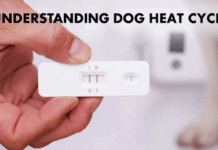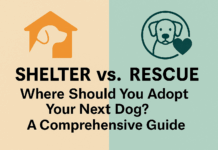Last Updated on July 7, 2023 by Dogs Vets
Is It Safe for Dogs to Sit in the Front Seat?
As devoted pet owners, we cherish our canine companions and strive to provide them with the best care and safety at all times. Yet, when it comes to car rides, a question often arises: Is it safe for dogs to sit in the front seat?
While some of us may love the idea of having our furry friends by our side, enjoying the wind in their fur and a front-row view of the world, it’s crucial to consider the potential risks and weigh them against our pets’ comfort.
In this article, we will explore the risks and dangers of letting your dog sit in the front seat, how to keep your dog safe and comfortable in the car, and some alternatives to the front seat for your dog.
So fasten your seatbelts, and let’s embark on this journey together, ensuring the well-being of our four-legged passengers every mile of the way.
Why It Is Not Safe for Dogs to Sit in the Front Seat
Dogs are curious and energetic creatures, and they may not understand the dangers of sitting in the front seat of a car. They may try to jump out of the window, distract the driver, or get injured by the airbag or other objects in case of a sudden stop or a crash.
According to the American Veterinary Medical Association (AVMA), unrestrained pets can cause serious injuries to themselves and others in a car accident. They can also escape from the car and run into traffic or get lost.
The front seat is especially hazardous for dogs because of the airbag. Airbags are designed to protect human passengers, but they can be deadly for dogs. The force of the airbag can cause severe trauma to a dog’s head, neck, chest, or spine.
Even if the airbag does not deploy, a dog sitting in the front seat can hit the dashboard, windshield, or door with great impact.
Risks and Dangers of Letting Your Dog Sit in the Front Seat
There are several reasons why letting your dog sit in the front seat can be risky and dangerous, both for your dog and for you. Here are some of them:
- Distraction: A dog sitting in the front seat can be a major distraction for the driver, especially if the dog is moving around, barking, or trying to get attention. This can increase the chances of an accident, which can be fatal for both of you.
- Airbag: If you have an airbag in your front passenger seat, it can pose a serious threat to your dog if it deploys in a crash. Airbags are designed for humans, not dogs, and they can injure or even kill your dog if they hit them with full force.

- Projectile: If your dog is not restrained in the car, they can become a projectile in a sudden stop or a collision. This means they can fly through the windshield, hit the dashboard, or hit you or other passengers with great impact. This can cause severe injuries or death for your dog and anyone else in the car.
- Escape: If your dog is sitting in the front seat, they may have access to the door or window controls. This can allow them to open the door or window and jump out of the car while it’s moving, which can result in serious harm or loss of your dog.
The Laws and Regulations for Dogs in Cars
Besides being unsafe for your dog, letting them sit in the front seat can also get you into trouble with the law. The laws regarding dogs in cars vary widely depending on where you live and drive.
In some states, such as Hawaii, it is illegal to have a pet in the front seat, as it is considered distracted driving.
In other states, such as California, there is no specific law about dogs in cars, but you could still be charged with reckless driving or animal cruelty if your dog is injured or causes an accident.
In some countries, such as Australia and the UK, you are required to restrain your dog with a seat belt or a harness when traveling in a car.
These laws are designed to prevent accidents caused by distracted driving, which can occur when your dog moves around, blocks your view, or tries to jump out of the window. They also aim to reduce the risk of injury or death for both you and your dog in case of a collision or a sudden stop.

If you break these laws, you could face penalties such as fines, points on your license, or even jail time. You could also be liable for any damages or injuries caused by your dog to other people or property.
To avoid getting into legal trouble, you should always check the laws and regulations of your state or country before taking your dog for a ride. You should also follow any signs or instructions that may prohibit dogs from certain areas or vehicles.
For example, some public transportation systems may not allow dogs on board unless they are service animals or fit into a small carrier.
Some rental car companies may also have policies that restrict dogs from their vehicles or charge extra fees for cleaning.
The Best Ways to Keep Your Dog Safe and Happy in the Car
So how can you make your car trips with your dog safer and more comfortable for both of you? Here are some practical tips and advice on how to do it:
1) Use a proper restraint for your dog. The safest way to transport your dog in a car is to use a crate, a carrier, or a harness that attaches to the seat belt. These devices will keep your dog secure and prevent them from flying around or escaping in case of a crash or a sudden stop.
They will also keep them from distracting you or interfering with your driving. Make sure that the restraint you choose is suitable for your dog’s size, weight, and temperament, and that it is well-made and tested for safety.
You can find many options online or at pet stores, but be sure to read the reviews and instructions carefully before buying.
2) Place your dog in the back seat or the trunk area. The best place for your dog to sit in the car is the back seat, as it is away from the airbags and the dashboard. You can also place your dog in the trunk area, if it is open and spacious, and if you can secure the crate or the carrier with straps or hooks.
Never leave your dog in a closed trunk, as it can cause suffocation, overheating, or panic. If you have a pickup truck, never let your dog ride in the open bed, as they can fall out, get hit by debris, or get stolen.

3) Provide your dog with enough water, toys, and attention. Traveling in a car can be stressful or boring for your dog, so you should make sure that they have everything they need to stay hydrated, entertained, and relaxed.
Always bring enough water and a bowl for your dog to drink from, and avoid feeding them too much before or during the trip, as it can cause nausea or vomiting.
You can also bring some toys or treats for your dog to chew on or play with, but avoid anything that could be choking hazards or cause damage to the car. You should also check on your dog regularly, and talk to them or pet them if they seem anxious or restless.
4) Stop for breaks if needed. Depending on how long your trip is, you may need to stop for breaks along the way. This will give you and your dog a chance to stretch your legs, use the bathroom, and get some fresh air.
You should also use this opportunity to check on your dog’s condition and comfort, and adjust their restraint or position if necessary. You should never leave your dog alone in a parked car, even for a few minutes, as it can quickly become a death trap.
According to the Humane Society of the United States, on a 70-degree day, the temperature inside a car can reach 100 degrees within 20 minutes. On an 85-degree day, it can reach 120 degrees within 10 minutes. This can cause heatstroke, organ failure, or death for your dog.
Well, That’s a Wrap
In conclusion, letting your dog sit in the front seat of a car is not a safe or smart idea. It can expose them to serious injuries from crashes, airbags, or other hazards, and it can also put you and other drivers at risk of accidents or legal troubles.
The best way to keep your dog safe and happy in the car is to restrain them properly in the back seat or the trunk area, and to provide them with enough water, toys, and attention.
By following these tips, you can ensure that your car trips with your dog are fun and enjoyable for both of you.
Fact Check
We hope you enjoyed reading this article. What are your thoughts on the topic?
“At [Dogsvets.com], our goal is to bring you the most accurate and up-to-date information on all things pet-related.
If you have any additional insights or would like to advertise with us, don’t hesitate to get in touch.
If you notice any errors or discrepancies in our content, please let us know so we can correct them.
We welcome your feedback and encourage you to share this article with others.”

















